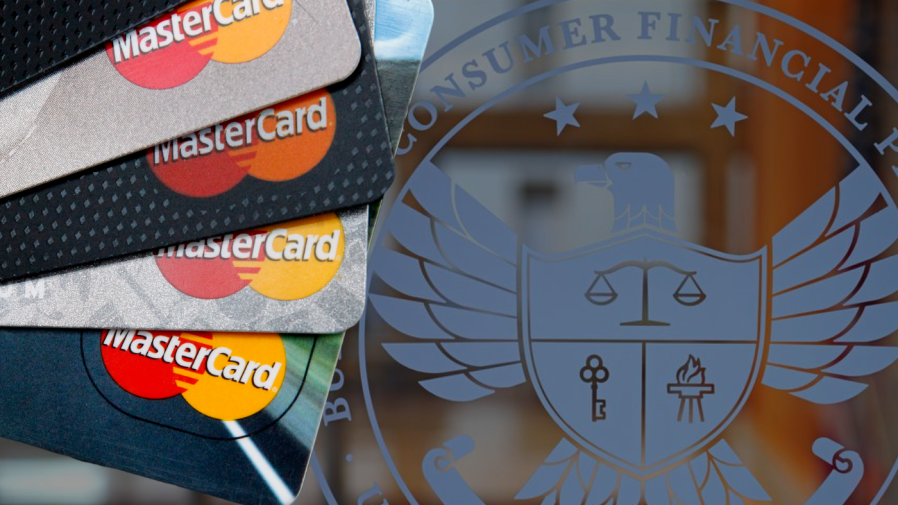Record-high credit card interest rates cost consumers $25 billion in 2023: Report

The average annual percentage rate (APR) on credit cards nearly doubled to 22.8 percent in 2023 from 12.9 percent in 2013, costing consumers around $25 billion in interest fees last year, according to an analysis by the Consumer Financial Protection Bureau (CFPB).
The average APR hit the highest level on record at the end of last year, according to the bureau’s analysis of data from the Federal Reserve, which started tracking it in 1994.
The surge in the overall average APR comes as credit card debt has hit an all-time high; U.S. credit card debt topped $1.1 trillion in the fourth quarter of 2023, and delinquencies have ticked up as well, according to the New York Federal Reserve.
And for the second consecutive year, 36 percent of Americans say they have more credit card debt than emergency savings, according to a Bankrate analysis. That’s the highest percentage since it started polling in 2011.
“Since finance charges are typically part of the minimum amount due, this additional interest burden may push consumers into persistent debt, accruing more in interest and fees than they pay towards the principal each year — or even delinquency,” the CFPB wrote.
Nearly half of the average APR increase over the past decade was driven by credit card issuers that raised their APR margin, which have increased across all credit tiers, the CFPB found.
“The APR on most credit card accounts can be viewed as being composed of the prime rate and the APR margin,” the report explains. “The prime rate (a benchmark most banks use to set rates) represents a good proxy for banks’ funding costs, which have increased in recent years. But credit card issuers have also sharply increased average APRs beyond changes in the prime rate.”
Lending money to consumers carries risk, and APR margins generate profit to offset that risk. APR margins that had hovered around 10 percent started ticking up around 2019, hitting a high of 14.3 percent in 2023, according to the CFPB’s analysis of Federal Reserve data.
Interest rate hikes by the Federal Reserve have also driven up the prime rate, and thus the overall APR. When the Fed cut interest rates to historic lows in 2020 as the pandemic raged, the prime rate hovered around 3.3 percent. As the Fed hiked interest rates to their highest level in 22 years last summer as part of its crusade to curb inflation, the prime rate soared to 8.5 percent, according to the CFPB’s analysis of central bank data.
The new report comes after banking giant Capital One announced plans to merge with credit card giant Discover on Monday, prompting criticism of the “dangerous” deal by some Democratic lawmakers and consumer advocacy groups.
“The merger of [Capital One] and [Discover] threatens our financial stability, reduces competition, and would increase fees and credit costs for American families,” Sen. Elizabeth Warren (D-Mass.), a member of the Senate Banking Committee, wrote on X, the platform formerly known as Twitter.
“This Wall Street deal is dangerous and will harm working people. Regulators must block it immediately,” she added.
Capital One CEO Richard Fairbank argued the deal would allow the bank “to build a payments network that can compete with the largest payments networks and payments companies” — a potential boon as Congress weighs a bill that aims to break up the “Visa-Mastercard duopoly” by requiring more options in the credit card payment network market.
Credit card companies, including a coalition that includes Capital One, have lobbied hard against Sen. Dick Durbin’s (D-Ill.) Credit Card Competition Act, arguing it would not reduce consumers costs and could tank popular rewards programs.
Late last week, the CFPB also released a report that found bigger credit card issuers offered worse terms and higher fees than their smaller competitors. Using a smaller banks that offers lower rates could save customers an average of $400 to $500 per year, the report found.
The Consumer Bankers Association, a trade group representing major U.S. banks, called the report “misleading,” saying its focus on APR failed to account for the varying interest rates, fees, and rewards across a range of products offered by larger banks.
But in the new report, the CFPB doubled down, concluding, “high levels of concentration in the consumer credit card market and evidence of practices that inhibit consumers’ ability to find alternatives to expensive credit card products. These practices may help explain why credit card issuers have been able to prop up high interest rates to fuel profits.”
For the latest news, weather, sports, and streaming video, head to The Hill.

